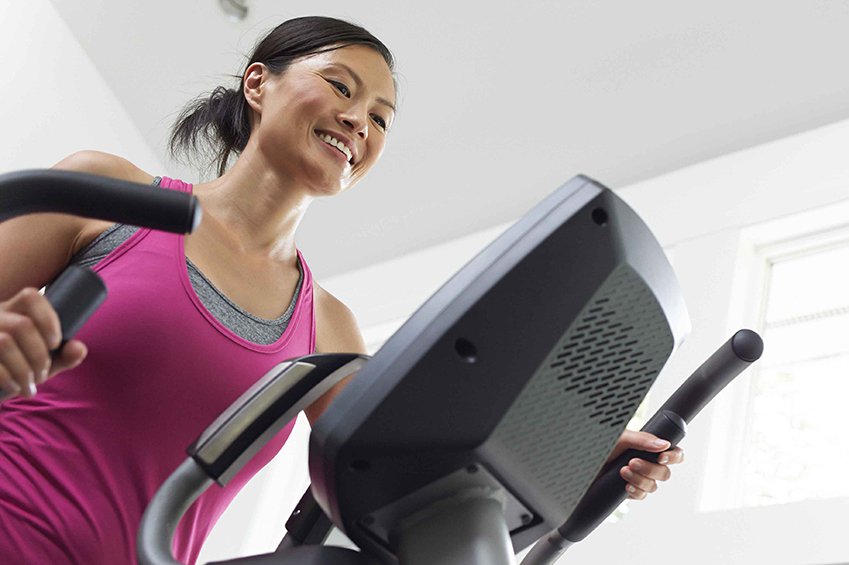Variety is the spice of life.
I’ve been an advocate of cross-training for runners for a very long time. Specifically the elliptical as it is similar to running in that it is weight bearing and moves through a familiar range of motion, but with no impact on the body. By shifting to three runs per week we were able to weave in two quality elliptical workouts, reduce the overall impact on her body and improve her recovery rate. In order for her to improve, we had to first develop a plan that allowed for optimal recovery so she could go into her runs and make the most of them. Alternating a running day with an elliptical day did this for her as well as providing a freshness to her program that kept the motivation flowing all season.Push hard with less impact on the body.
Initially, we used the elliptical for hard effort workouts to teach her how to reach outside her comfort zone without the impact on her body. She followed a 30-minute high intensity interval program on the elliptical machine where she alternated short intervals for one minute in a hard red zone effort, with an easy yellow zone effort to recover. This boosted her fitness, her metabolism, and her mind’s ability to push outside her comfort zone. It also established a wider range of fitness to transition to harder effort runs. Mid-season we began to transition her red zone intervals to her runs and swapped out one of her elliptical workouts to an easy recovery session. This allowed her to translate her running fitness to harder running with less stress on the body.Improve your form.
Another great resource the elliptical provides is the ability to focus on moving your feet quickly. In the running world this is known as your cadence, or the number of times your feet strike the ground. Research has found that on average, runners should stride about 90 steps per foot per minute. Many runners tend to over stride, taking big steps which can zap more energy stride for stride. We incorporated gliding elliptical workouts where the resistance and incline levels are low, and the goal is to move your feet at 180 strides per minute. Over time, she developed the neuro-muscular movement patterns on the elliptical as well as in her runs. This aided in developing a faster, more efficient stride, improved turn over speed, less energy expenditure and reduced impact on the body.Increase strength and stamina.
One of the greatest benefits to elliptical training is in working with the incline and climbing workouts. When using a climbing workout, it activates the gluteal muscle group, a common weak area in runners. The intensity of the climbing motion is similar to that of running hills, and develops leg and core strength right along with the fitness from working at a harder effort. It’s different enough to utilize other muscle groups, but greatly compliments as it strengthens a runner’s weak areas. She alternated every other week with a climbing elliptical workout, followed by a form-cadence workout to keep her program fresh and develop a wide range of fitness and skills.To recover is to improve.
As she made her way through the second half of her twelve week training season, her runs slowly transitioned to fast intervals, a hill workout and a longer slower run, while her elliptical workouts shifted to active recovery. Her program ebbed and flowed from a hard or longer run to an easy effort elliptical to allow her body to recover from the demands of the running workouts. In season’s past, she made the common mistake of training in the same moderately hard effort for all her workouts, which left her tired, achy and stale come race day. By changing the flow of her training, her body was able to recover from the stress of the program, adapt and improve performance. Elliptical training is an incredibly useful tool for runners, especially those that are looking to improve their performance.Image
Coach Jenny Hadfield is a published author, writer, coach, public speaker and endurance athlete. To find out more, visit our Meet Our Writers page or visit Coach Jenny’s website. 